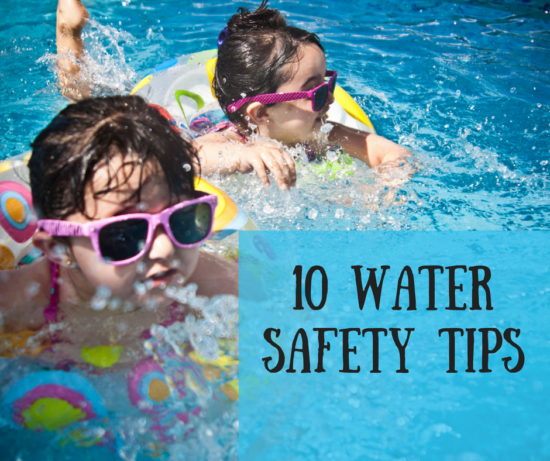When the sweltering heat of Texas summer is upon us, we often find ourselves seeking relief in a pool, lake, or ocean with our families. The water is a great way to cool off, stay active, and create lifelong memories with your kids. Far too often, however, we forget how dangerous that water can be and how vigilantly we need to protect our children.
I was always the mom that thought I kept a close eye on my children. I thought I knew everything there was to know about how to keep them safe near water. I thought I was doing my best job…until we had our own close call with drowning. The scariest part? My child (who I thought had gone inside) was only a few feet away from me when it happened. By the grace of God, when I scooped my child from the water, she was okay.
Tragically, that is not the case for far too many children. Forty-three children in Texas have drowned in Texas so far in 2018. Drowning is the leading cause of accidental death for children under the age of five. Fortunately, there are many steps that we can take as parents to ensure our children’s safety in the water.
5 Water Safety Tips to Prevent Drowning
-
Have a designated adult supervising the water at all times.
If your children are in the water, there should be an adult watching them at all times. This person should be sober and undistracted by other things. A realistic way to accomplish this task is by taking turns, or shifts. You can use a specific object, like a necklace or a hat, for the designated adult to wear during their “shift.” It only takes two minutes for a person submerged in water to lose consciousness. This is about the same time it takes to read and reply to a text message.
-
Teach children about water safety early.
Did you know that children can start swim lessons as early as six months old? The most important thing that children will learn in swim lessons is self-rescue techniques, such as floating on their back and safely swimming to the edge or steps. This simple skill could save their life in the event that they fall into the water accidentally. It is never too early to establish rules for the water with your children. Consider making rules for both swimming times AND non-swimming times.
-
Do NOT rely on flotation devices.
One of the biggest mistakes that parents can make is putting too much faith in floaties and rafts. These are NOT lifesaving devices. When possible, use a Coast Guard-approved life vest when in the water, but always remember that no flotation device or life vest should ever replace supervision.
-
Check pool equipment thoroughly and often.
Pool drains should be checked (at least) yearly by a professional. Make sure to check the drain in any pool you are swimming in, whether private or public. A faulty, damaged, or missing drain cover can result in entrapment of hair or clothing, holding that person underneath the water. Before getting in a pool or spa, locate the emergency shut-off switch. If you are unsure how to check your drains, please contact a pool service professional. (This is especially important in pools built before 2008.)
-
Be prepared for an emergency.
Though you hope that you will never need them, it is incredibly important that you are prepared in case of an emergency. Have these things readily available:
- First aid kit
- Scissors (in the event of entrapment)
- Posted CPR instructions
- Posted “Water Rules”
- Life ring or reaching pole to reach someone who is drowning (avoid jumping into deep water to rescue someone, as a person in distress could pull you underwater)
- Telephone to call 911
Plus 5 Tips for Water Safety When You’re Not Swimming
- Keep pool toys out of the pool.
- Empty portable pools when not in use.
- Make sure to have a pool fence around the pool. It should be at least four feet tall, self-closing, self-latching, and locked.
- Consider getting a back door alarm or pool surface alarm.
- If a child is missing, look in the water FIRST. Every second counts!














